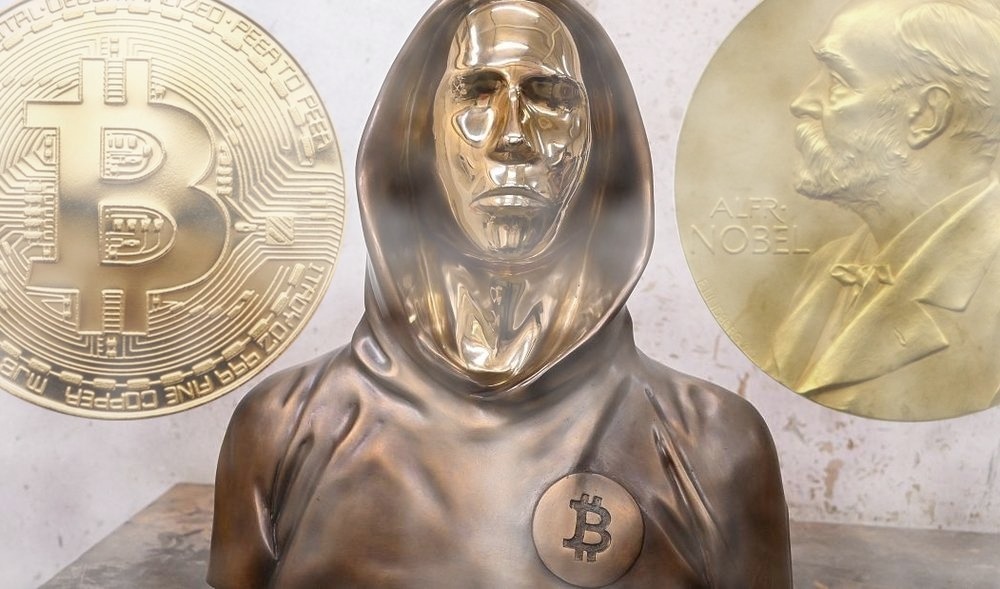Table of Contents
Cryptocurrencies have skyrocketed into the spotlight in recent years, becoming an essential part of the financial ecosystem. They attract tech enthusiasts, investors, and even your uncle who still struggles with online banking. What is cryptocurrency? In simple terms, it’s a digital currency that uses blockchain technology for secure and, most importantly, decentralized transactions. Unlike traditional fiat currencies, cryptocurrencies are not issued by a central authority, making them independent from banks and fully transparent.
In this guide, we’ll answer the burning questions that keep crypto newbies awake at night: What is cryptocurrency? How does it work? And why is it shaping the future of finance?
What is Cryptocurrency, and How Did It Start?
A cryptocurrency is a digitally created asset that uses cryptography to secure and verify transactions. Unlike traditional currencies issued by central banks (like dollars, euros, or pesos), cryptocurrencies do not exist in physical form and are not controlled by any central authority. Instead, they operate on decentralized networks, powered by thousands of computers worldwide.
The first and most famous cryptocurrency is Bitcoin (BTC). It emerged in 2009, created by the mysterious Satoshi Nakamoto (a person or group, no one really knows 🤷). Nakamoto’s goal? To create an alternative financial system where users can transact directly, without middlemen like banks.
As we mentioned, cryptocurrencies run on blockchain technology, which is basically a decentralized ledger that records all transactions. Here’s why blockchain makes crypto so powerful:
✅ Security – Every transaction is encrypted and cannot be altered retroactively.
✅ Transparency – Anyone can verify the transaction history publicly.
✅ Decentralization – No single entity (like a bank or government) can control it.
Thanks to these features, cryptocurrencies are not just an investment asset but also a fast and secure way to make digital payments worldwide.
Key Takeaways:
- Cryptocurrencies are digital assets that run on decentralized networks, beyond the control of governments and banks.
- Blockchain technology is expected to revolutionize multiple industries beyond finance.
- Crypto transactions are fast and secure, but mining (Proof of Work) can be energy-intensive.
- While crypto offers financial freedom, it also comes with high volatility and regulatory uncertainty.
What Makes Cryptocurrency Different from Traditional Money?
When we ask, “What is cryptocurrency?”, the best answer is this: It’s digital money that operates without a central authority. Here’s how it compares to traditional fiat currencies:
| Feature | Cryptocurrencies | Traditional Fiat Money |
|---|---|---|
| Control | Decentralized – controlled by a network of validators or miners | Centralized – issued and regulated by governments & central banks |
| Physical Form | Digital-only | Exists as banknotes, coins, and digital currency |
| Supply | Fixed or limited supply (e.g., Bitcoin max. 21M BTC) | Unlimited – central banks print more money as needed |
| Transaction Verification | Verified by decentralized blockchain networks | Processed by banks and financial institutions |
| Transparency | Every transaction is publicly recorded on the blockchain | Most transactions are private and opaque |
| Security | Secured by cryptography and decentralized consensus | Protected by central banking systems |
| Transaction Speed & Cost | Fast and often low-cost (Lightning Network) | Bank transfers can be slow and expensive, especially across borders |
Many experts believe cryptocurrency is one of the biggest financial innovations of our time. Here’s why:
✅ Decentralization – People control their own money instead of relying on banks or governments.
✅ Financial Inclusion – Cryptos give access to financial services to millions without bank accounts worldwide.
✅ Transparency & Security – Transactions are public, immutable, and encrypted, reducing fraud.
✅ Innovation – Technologies like DeFi (Decentralized Finance), NFTs, and the metaverse expand crypto’s use cases.
Because of these advantages, more financial experts see cryptocurrency as the future of digital finance.
The History of Cryptocurrency: From Bitcoin to Thousands of Altcoins
In just two decades, cryptocurrencies have evolved from an experimental technology into a global financial phenomenon.
2008-2009: The Birth of Bitcoin
During the 2008 financial crisis, a mysterious figure named Satoshi Nakamoto released the Bitcoin Whitepaper titled “Bitcoin: A Peer-to-Peer Electronic Cash System“. Their mission? To create a decentralized payment network that eliminates the need for banks.
In 2009, Nakamoto mined the Genesis Block, the first-ever Bitcoin transaction, marking the start of the crypto era.

2010: First Real-World Crypto Transaction
On May 22, 2010, a developer named Laszlo Hanyecz bought two pizzas for 10,000 BTC (worth millions today). This day is now celebrated as Bitcoin Pizza Day.
2011-2013: The Rise of Altcoins
Bitcoin’s success led to the creation of alternative cryptocurrencies (“altcoins”), such as:
- Litecoin (LTC) – A faster version of Bitcoin.
- Ripple (XRP) – Focused on instant global payments.
2017: The Crypto Boom
Bitcoin hit $20,000, Ethereum introduced smart contracts, and ICOs (Initial Coin Offerings) exploded—until regulators cracked down, leading to China banning ICOs.
2021: DeFi, NFTs & Another Bull Run
Ethereum’s DeFi and NFT markets exploded, Bitcoin hit an all-time high of $69,000, and El Salvador became the first country to adopt BTC as legal tender.
2025: Regulation & Mainstream Adoption
Governments worldwide are now implementing clearer crypto regulations, and major financial institutions are integrating Bitcoin and blockchain technology into their services.
Today, thousands of cryptocurrencies exist, many of which go beyond just being a digital form of payment. They are shaping entire ecosystems, pushing the boundaries of finance, privacy, and scalability.
Here are some of the biggest players in the space:
- Ethereum (ETH) – The king of smart contracts and the backbone of the DeFi ecosystem.
- BNB (Binance Coin) – A major token powering the Binance ecosystem, used for trading fees, staking, and DeFi.
- Solana (SOL) – A blockchain known for high scalability and lightning-fast transactions.
- Monero (XMR) – A privacy-focused cryptocurrency that makes transactions untraceable.
- Dogecoin (DOGE) – Originally a meme, now a widely accepted fun alternative to traditional payments.
Cryptocurrencies continue to evolve rapidly, and their future suggests they will significantly impact the financial sector and digital payments.
How Do Cryptocurrencies Work? The Basics
Cryptocurrencies are digital assets built on blockchain technology, cryptography, and decentralized networks. They enable peer-to-peer transactions without intermediaries, increasing security and efficiency.
Blockchain: The Digital Ledger
A blockchain is a decentralized, public, and immutable database that records all transactions in a secure way.
- Each transaction is part of a block that contains data on the amount, sender, and recipient.
- Blocks are linked using cryptographic hashes, making them tamper-proof.
- The blockchain is distributed across thousands of computers (nodes) worldwide—meaning there is no central server to hack or manipulate.
Cryptography: Securing and Verifying Transactions
To keep transactions secure, cryptocurrencies use asymmetric cryptography:
- Each user has a private key, used to sign transactions.
- Each account also has a public key (wallet address), which allows receiving funds.
- Hashing algorithms (e.g., SHA-256 for Bitcoin) ensure data integrity and prevent tampering.
Mining & Transaction Verification
In the traditional banking system, transactions are verified by banks. In cryptocurrencies, verification is done by miners or validators.
Proof of Work (PoW) – Bitcoin’s Mining Process
Bitcoin and some other cryptocurrencies use mining—a process where miners solve complex mathematical puzzles to verify transactions and add them to the blockchain.
- Miners are rewarded with newly minted Bitcoins for their work.
- Mining requires significant computing power and energy but ensures the security of the network.
Proof of Stake (PoS) – A Greener Alternative
Many newer cryptocurrencies, such as Ethereum, Solana, and Cardano, use Proof of Stake (PoS) instead of mining.
- Validators verify transactions based on how many coins they hold and stake.
- PoS is more energy-efficient and allows for faster transaction processing.
The Most Prominent Cryptocurrencies in 2025
As of 2025, Bitcoin and Ethereum remain the dominant cryptocurrencies, but several altcoins are making waves in the industry.
1. Bitcoin (BTC)
- Function: The first and most widely adopted cryptocurrency, often called digital gold.
- Advantages: Decentralization, high security, mainstream adoption, and fixed supply (21 million BTC).
- Limitations: Slower transaction speeds and higher fees compared to some altcoins.
2. Ethereum (ETH)
- Function: The smart contract platform powering DeFi, NFTs, and blockchain applications.
- Advantages: Flexibility, active developer community, and a vast ecosystem of decentralized applications (dApps).
- Limitations: High gas fees.
3. XRP
- Function: A digital currency designed for fast and low-cost cross-border payments.
- Advantages: Speed, low fees, and partnerships with major financial institutions.
- Limitations: More centralized compared to Bitcoin and Ethereum.
4. Solana (SOL)
- Function: A high-speed blockchain designed for dApps and DeFi.
- Advantages: Ultra-fast transactions, low fees, and a growing ecosystem.
- Limitations: A shorter track record and past network outages.
5. Cardano (ADA)
- Function: A scientific approach to blockchain with a focus on security and scalability.
- Advantages: Energy-efficient PoS model, low fees, and strong academic research backing.
- Limitations: Slower implementation of upgrades compared to Ethereum.
Bitcoin: The Undisputed King of Crypto 👑
When it comes to cryptocurrencies, Bitcoin (BTC) is the heavyweight champion, the granddaddy of them all, the digital gold that refuses to be dethroned. Thanks to its decentralization, security, and limited supply, Bitcoin has cemented its status as the gold standard of the crypto world. Unlike fiat currencies that central banks print like there’s no tomorrow, Bitcoin has a fixed cap of 21 million coins—no shady money printers here!
Every ten minutes, new BTC enter circulation as miners solve complex mathematical puzzles (basically, Sudoku on steroids) to validate transactions and secure the network. But wait, there’s more! Every four years, something called a halving takes place, cutting miner rewards in half. This controlled supply mechanism has historically led to price increases, as fewer BTC are being created over time—kind of like digital gold but with a way cooler backstory.
At the end of 2024, Bitcoin hit the psychological milestone of $100,000 before facing a market correction (because, well… volatility). But despite price swings that could make even the most seasoned trader sweat, Bitcoin remains a powerhouse. Its role as a store of value continues to attract retail investors, institutions, and even corporate giants like Tesla, BlackRock, and MicroStrategy, which keep stacking BTC like it’s going out of fashion.
Ethereum: The Smart Contract Sorcerer 🧙♂️
While Bitcoin is the king of crypto, Ethereum (ETH) is the wizard behind smart contracts and decentralized applications (dApps). If Bitcoin is digital gold, Ethereum is digital oil—fueling an entire ecosystem of blockchain-based financial services, NFTs, and decentralized finance (DeFi).
Unlike Bitcoin, which is mainly a store of value, Ethereum was designed to be a programmable blockchain, allowing developers to create self-executing contracts. These smart contracts have transformed industries by enabling trustless agreements, meaning that transactions can be completed automatically without a middleman (sorry, banks and lawyers).
Ethereum’s influence in DeFi (Decentralized Finance) has been monumental. By 2025, the DeFi sector has exploded, offering everything from staking, lending, and borrowing, to yield farming and decentralized exchanges (DEXs). This means that instead of traditional banks, users can earn interest, trade assets, and access financial services entirely on blockchain networks. Ethereum has essentially democratized finance, putting power back into the hands of the people.
The Pros and Cons of Cryptocurrencies ⚖️
With all the hype around crypto, it’s important to understand both the pros and cons before diving in headfirst like a degen trader in a bull market.
Key Advantages of Cryptocurrencies:
✅ Full Financial Control – No need to trust banks; you hold your own assets.
✅ Low Transaction Fees – Sending money worldwide is cheaper and faster than traditional banking.
✅ Access for the Unbanked – Crypto opens financial doors for millions without bank accounts.
✅ Bitcoin as a Store of Value – A hedge against inflation, much like digital gold.
✅ DeFi & dApps – Ethereum and other blockchains have revolutionized finance, gaming, and digital ownership.
✅ Censorship Resistance – Governments can’t freeze your funds (looking at you, centralized banking system 👀).
Potential Risks of Cryptocurrencies:
⚠️ Volatility – Prices can skyrocket, but they can also tank overnight (diamond hands, anyone?).
⚠️ Regulatory Uncertainty – Some governments ban crypto, while others heavily tax it (hello, Italy, Japan, and Denmark).
⚠️ Hacks & Scams – Crypto exchanges and DeFi platforms are prime targets for hackers.
⚠️ User Error – Send Bitcoin to the wrong address? Oops, it’s gone forever.
⚠️ Too Many Meme Coins – Thousands of new tokens launch daily—many are outright scams.
How to Protect Yourself in the Wild West of Crypto 🤠
With great power comes great responsibility. If you’re investing in crypto, security should be your top priority. Here’s how to stay safe:
- Use a Hardware Wallet – Cold wallets like Ledger or Trezor keep your assets offline and safe from hackers.
- Do Your Research – If a coin sounds too good to be true (“Guaranteed 10,000% gains!”), it’s probably a scam.
- Never Share Your Private Keys – Your seed phrase is your lifeline. If you lose it, you lose everything.
- Enable Two-Factor Authentication (2FA) – Use 2FA on exchanges to prevent unauthorized access.
- Diversify Your Portfolio – Don’t go all in on a single coin—spread your risk like a smart investor.
The Future of Cryptocurrencies: Where Are We Heading in 2025?
The crypto space continues to evolve, and institutional adoption is on the rise. The approval of Bitcoin and Ethereum spot ETFs in the U.S. has opened the floodgates for traditional investors. More and more people are treating crypto as a legitimate asset class, pushing the industry towards mainstream adoption.
Meanwhile, DeFi is expanding rapidly, offering new and improved financial services that outcompete banks in terms of accessibility, security, and yield. Technological innovations, such as layer-2 scaling solutions and enhanced security protocols, are making blockchains faster and cheaper to use.
Crypto vs. Traditional Assets: A Performance Comparison
As we move through 2025, Bitcoin has outperformed both gold and the S&P 500, proving its strength as a high-growth asset.
- Bitcoin: Hit an all-time high of $106,000 in December 2024, despite short-term volatility.
- Gold: A stable but slow-moving asset, still serving as a hedge against economic downturns.
- S&P 500: Saw growth, but lagged behind Bitcoin’s gains, confirming that investors see crypto as a dynamic addition to portfolios.
Crypto Adoption by Institutions & Governments
The big players are getting involved. The adoption of Bitcoin as legal tender in El Salvador was just the beginning. More countries in Latin America and Africa are exploring crypto-friendly policies.
- Big banks like Goldman Sachs and BNY Mellon are integrating crypto services for their clients.
- Corporations like Tesla and MicroStrategy keep stacking BTC as part of their treasury reserves.
- Japan’s Metaplanet is now following in MicroStrategy’s footsteps, aggressively buying Bitcoin.
The global financial system is evolving, and crypto is at the center of this transformation. Whether you’re an investor, a trader, or just a curious observer, one thing is clear—cryptocurrency is here to stay.
Conclusion: What is Cryptocurrency, and Why Should You Care?
Cryptocurrency is digital money built on blockchain technology, offering financial independence, transparency, and security. Unlike fiat currencies, crypto isn’t controlled by any government, making it an innovative tool for financial inclusion and investment diversification.
With growing adoption, learning about crypto is becoming essential for anyone interested in the future of money.














![How to Buy X Stocks [Twitter] – A Step-by-Step Guide 23 How to Buy X Stocks [Twitter] – A Step-by-Step Guide](https://cryptheory.org/wp-content/uploads/2025/02/2-14-350x250.jpg.webp)














